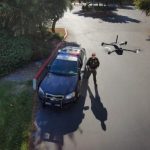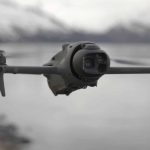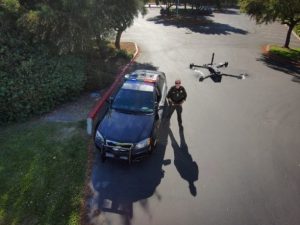LiquidPiston Unveils Hybrid Power System for Military Drones at XPONENTIAL 2025
A New Innovation in UAV Propulsion
At the XPONENTIAL 2025 conference, held in Houston, LiquidPiston, a small private company based in Bloomfield, Connecticut, unveiled its innovative hybrid power system designed specifically for the U.S. Army. This system promises to provide a compact and highly efficient power source for next-generation Unmanned Aerial Vehicles (UAVs) and electric vertical take-off and landing vehicles (eVTOLs).
With funding from Army Innovation Programs, LiquidPiston has engineered the XTS-210 engine, which has already been demonstrated in an off-the-shelf drone. This hybrid system allows the UAV to charge its batteries in flight, significantly extending its operational range.

“Our goal is to integrate and modify these UAVs ourselves to gain the necessary insights and to ensure a comprehensive flight demonstration of our engine,” explained Per Suneby, the company’s senior vice president of corporate development.
LiquidPiston was selected last year to join the Army’s Small Business Innovation Research (SBIR) CATALYST Program, receiving up to $15 million to advance its technology into practical military use. Currently, the company is in Phase 2 of the program, which aims to enable small businesses to compete for significant defense contracts.
Suneby noted, “Only small businesses can apply; Lockheed Martin, for example, can’t directly apply but can be utilized as a subcontractor,” emphasizing the program’s focus on fostering innovation among emerging companies.
By this summer, the company aims to showcase the flight capabilities of a UAV equipped with its proprietary 25-horsepower engine, with plans for asecond modified drone by December.
The UAV in question has a maximum takeoff weight of 600 pounds, with approximately 60% of its retrofitted components being unique designs from LiquidPiston. “We oversee all elements, from battery management to flight control, to optimize the hybrid-electric propulsion system,” he stated.
At its core lies the compact X-engine, compatible with standard jet fuel. Notably, this rotary engine configuration can be up to 90% smaller than comparable piston diesel engines. LiquidPiston’s X-engines are designed with patented thermodynamic cycles that enhance efficiency while minimizing noise and vibration.
This hybrid propulsion system ensures that the UAV can operate effectively for military strategies. The drone is equipped with dual motors: a combustion engine for vertical takeoff and an electric motor for quieter operations during stealth missions. Depending on mission requirements, operators can switch between battery power and combustion to either reduce noise levels or enhance flight endurance.
Additionally, this hybrid system can recharge onboard batteries or even supply power to ground troops, enhancing operational versatility.
Suneby estimated the drone could achieve a flight endurance of around two hours, with operational applications across surveillance, reconnaissance, and communication. Ultimately, the Army will determine the drone’s various applications.
“We are demonstrating technology, focusing on UAV propulsion rather than being involved directly in the UAV sector,” Suneby highlighted.
The funding acquired by LiquidPiston, which employs about 50 people, is derived from a mix of government contracts and individual investments, with military contracts coming from both the Army and the Air Force.
While targeting military use, LiquidPiston sees opportunities to market its innovations in commercial sectors as well. Discussions are underway to adapt technologies developed for military applications for civilian purposes.
“Our military efforts assure funding and foster development of our technology, and they value innovations that significantly improve size and fuel efficiency,” he noted, identifying this as a premium market focused on low-volume and high-value applications.
“Our objective is to leverage our military experience to explore commercial uses with industrial partners, which we’ve already started to evaluate,” he concluded, affirming the plethora of innovations they have in the works.
Related Articles:
- The Pentagon Just Upped Its Investment in MIT Grad’s Startup to Enhance Military Drone Endurance
- Current Needs of the US Military for Drone Systems
- Drones in Modern Military Strategy: Insights from Troy Meink’s Hearing
For more details, you can read the original article here.













